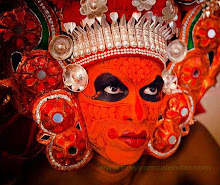ARALAM FARM, IRITTY, KANNUR
Aralam wildlife sanctuary is the northernmost protected area of Kerala
state, situated in the southeast part of Kannur District. The sanctuary
area falls in Aralam, Kelakam and Kottiyoor revenue villages and is
located in the Northwest slopes of Western Ghats contiguous with the
forests of Coorg (Kodagu) district of Karnataka state. Aralam is a
contiguous block of forests stretching to the adjacent
Wayanad-Brahmagiri and Wayanad northern slopes. The forests are
also contiguous with the protected areas of the Karnataka state namely
the Brahmagiri Wildlife Sanctuary and also with the forests of Coorg
and assume much importance in meta population management
especially with regard to the case of larger mammals such as Gaur,
Elephant, Tiger and endemic primates such as Lion-tailed macaque,
and Nilgiri Langur. The Cheenkannipuzha, a major tributary to the
Valapattanam River originates from the forests of Aralam and this river
is very crucial in controlling the Agro-Economy and Fishery-
Economy of Kannur District. Perennial nature of the river is very
much depended on the watershed services provided by the Aralam
forests. It is the only protected stretch of forests in the
district and since man-wildlife conflict is a mounting problem in the
region, due to the presence of larger fauna, Aralam wildlife
sanctuary has tremendous scope in the field of Conservation,
Education, Research and creating environmental awareness. Aralam
sanctuary forms a vital link in the network of protected areas
stretching from north to south along the Western Ghats. Aralam forests
with its local specialized ecological niche support a variety of
endemic species, which are in the verge of extinction.
































